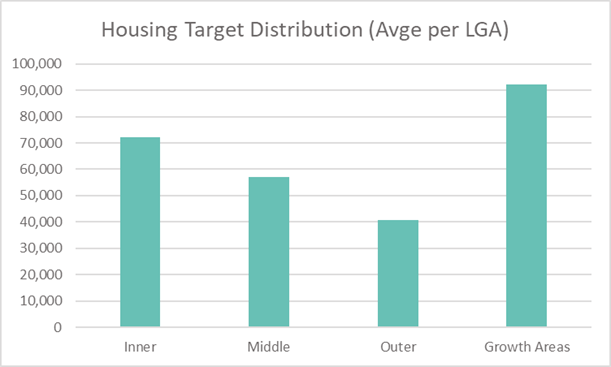What we know
The Victorian Government has recently released draft housing targets which identify the number of homes to be built between now and 2051, tailored for each local government area in the state. The State Government reports that the targets are “largely based on access to the jobs, transport and services Victorians need”. Councils and the community can comment on the draft targets, and once finalised, they will be implemented through Plan for Victoria, to be released later this year.
Shifting the dialogue
Urbis welcomes the advancement of policy efforts to promote an increase in well-located housing in Victoria.
In the past, there has been a fundamental missing link between State housing policy and local implementation. This announcement marks a positive step towards bridging this gap, fostering a more cohesive and coordinated approach to housing policy.
The commencement of consultation signals a clear intent by the State Government to engage local councils in the appropriate distribution of housing supply to meet broader housing needs. This is a significant stride towards a more inclusive and comprehensive approach to tackling the housing crisis which builds on the ten-year goals previously outlined in Victoria’s Housing Statement.
However, while we celebrate this progress, we must also focus on how to actually create change. The housing targets are a worthwhile and commendable step toward solving the prevailing housing crisis, but will require the combined efforts of government at all levels, industry and financial sectors working toward the common goal of providing homes for Victorians.
Benchmarks and goals are pivotal, but this step needs to be backed by commitment, clear accountability measures, and regular monitoring. Arguably most critically, we cannot rely on long-term targets to address the immediate need.

